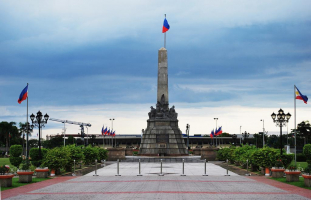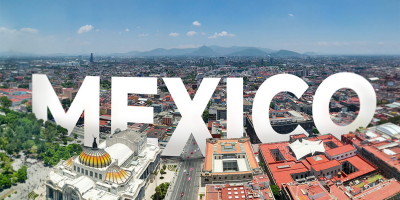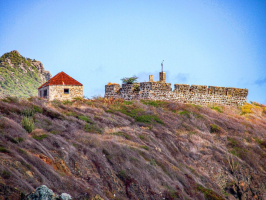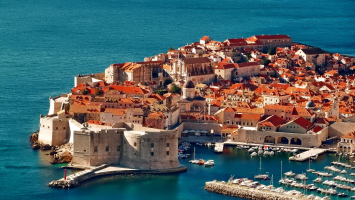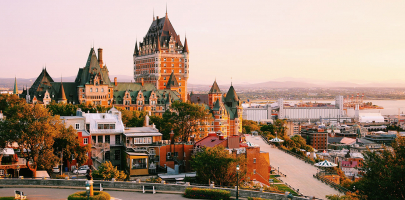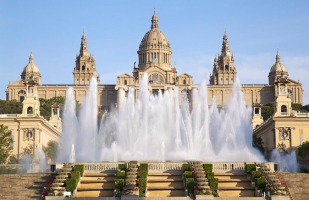Top 12 Most Beautiful World Heritage Sites
The distinguished list of UNESCO World Heritage sites includes over 1,000 sites that are regarded to be of extraordinary worth to humanity, whether for ... read more...cultural or ecological grounds. Everything from European towns to tropical islands, American national parks to African churches, and endangered treasures on the verge of extinction are on the list. Right now, follow the Toplist to discover the most beautiful world heritage sites.
-
Angkor Wat is a temple complex in Cambodia that is the world's biggest religious monument, covering 162.6 hectares (1,626,000 m2; 402 acres). Angkor Wat was consecrated to Vishnu for the Khmer Empire, breaking with the Shaiva practice of prior kings.
Suryavarman II, the Khmer King, erected it as his state temple and eventual mausoleum in Yaodharapura, the Khmer Empire's capital, in the early 12th century. The temple-mountain and the subsequent galleried temple are the two primary plans of Khmer temple construction that Angkor Wat incorporates. Within a moat more than 5 kilometers (3 mi) long and an outside wall 3.6 kilometers (2.2 mi) long are three rectangular galleries, one raised above the next, to resemble Mount Meru, the home of the devas in Hindu mythology. A quincunx of towers lies at the heart of the temple. Scholars disagree about the significance of Angkor Wat's orientation to the west. The temple's architecture is recognized for its grandeur and harmony, as well as its large bas-reliefs and countless devatas gracing its walls.
Angkor Wat is the only temple at the site that has remained an important religious center since its creation, and it is also the best-preserved. The temple represents the pinnacle of Khmer architecture's high classical style. It is one of the most important Buddhist pilgrimage destinations in Cambodia and around the world, having played a key part in Cambodia's conversion to Buddhism. It has become a national symbol of Cambodia and is the country's most popular tourist attraction. Hosting more than two million visitors a year, this artistic masterpiece is one of the most beautiful world heritage sites in the world.
Location: Siem Reap, Cambodia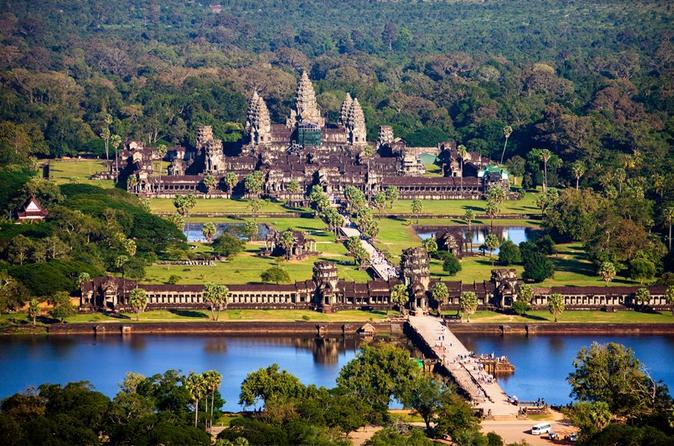
Photo: indochinavoyages 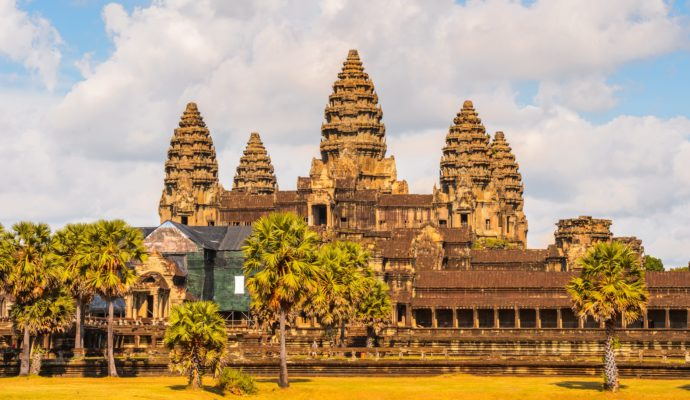
Photo: visitsoutheastasia -
The Taj Mahal is an ivory-white marble mausoleum in Agra, India, on the right bank of the Yamuna River. It was built in 1632 by Mughal emperor Shah Jahan (r. 1628–1658) to contain the tomb of Mumtaz Mahal, his favorite wife, as well as Shah Jahan's own mausoleum. The tomb is placed in formal gardens surrounded on three sides by a crenelated wall, and is the centerpiece of a 17-hectare (42-acre) complex that includes a mosque and a guest house.
The mausoleum was substantially finished in 1643, but work on other aspects of the project proceeded for another ten years. The Taj Mahal complex is thought to have been finished in its entirety in 1653 at a cost of around 32 million pounds, which would be around 70 billion pounds in 2020 (around $1 billion). 20,000 artisans worked on the project, which was overseen by a board of architects chaired by Ustad Ahmad Lahauri, the emperor's court architect. The Taj has used various sorts of symbolism to depict natural beauty and divinity.In 1983, the Taj Mahal was named a UNESCO World Heritage Site for being "India's jewel of Muslim art and one of the world's most universally admired masterpieces." Many consider it to be the finest example of Mughal architecture and a symbol of India's long history. The Taj Mahal has over 6 million tourists each year and was named one of the New 7 Wonders of the World (2000–2007) initiative winners in 2007.
Location; Agra, Uttar Pradesh, India
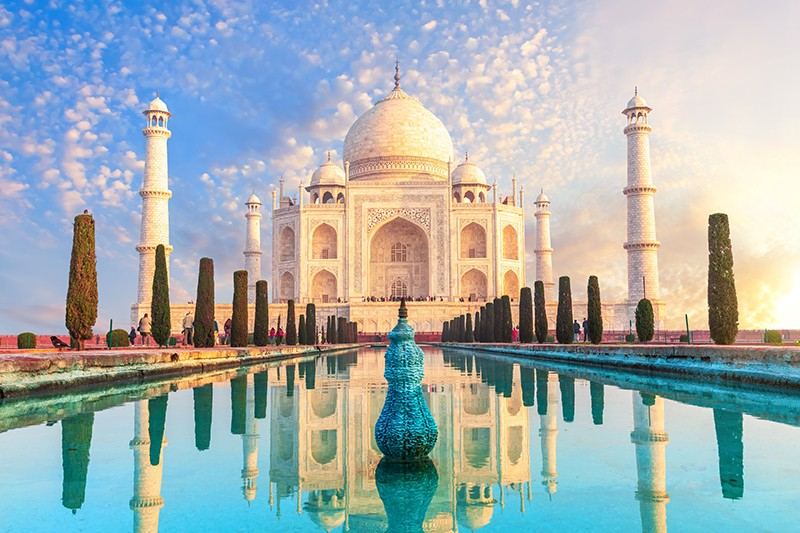
Photo: pystravel 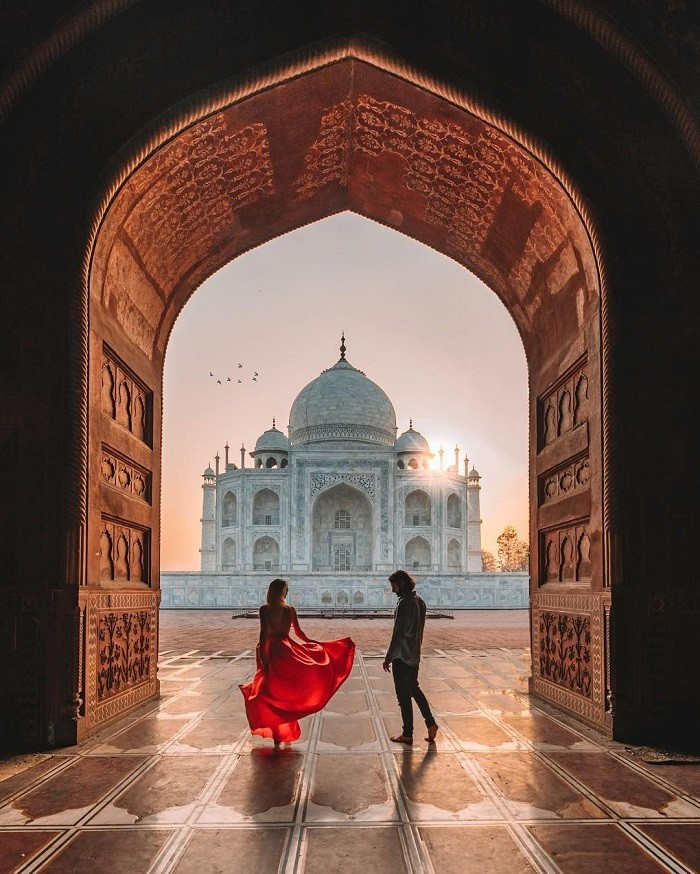
Photo: pystravel -
The Great Barrier Reef is the world's biggest coral reef system, with over 2,900 distinct reefs and 900 islands spanning over 2,300 kilometers (1,400 miles) over a 344,400-square-kilometer region (133,000 sq mi). The reef is located in the Coral Sea, off the coast of Queensland, Australia, and is separated from the coast by a channel that is up to 100 miles wide and over 200 feet deep in some spots. The Great Barrier Reef is the world's largest single structure built by living beings and can be viewed from space. Hundreds of billions of microscopic organisms known as coral polyps make up this reef structure. It was designated as a World Heritage Site in 1981 and supports a vast variety of life.
It was added to the list of Australian World Heritage Sites in 2007. In 2006, the Queensland National Trust designated it as a Queensland state icon.
The Great Barrier Reef Marine Park protects a substantial portion of the reef, reducing the impact of human activities like fishing and tourism. Runoff, climate change with mass coral bleaching, dumping of dredging muck, and cyclic population outbreaks of the crown-of-thorns starfish are some other environmental stressors on the reef and its ecosystem.
The reef is a major tourist destination, particularly in the Whitsunday Islands and Cairns areas. Tourism is a significant source of revenue for the region, contributing approximately AUD$3 billion annually. In November 2014, Google launched Google Underwater Street View in 3D of the Great Barrier Reef.Location: Off the east coast of the Queensland mainland, Australia

Photo: danviet 
Photo: bbc -
Easter Island is a Chilean island and a Chilean special territory in the southeastern Pacific Ocean, at the southeasternmost point of Oceania's Polynesian Triangle. The island is well known for the nearly 1,000 moai (monumental statues) that were built by the early Rapa Nui people. Easter Island was designated as a World Heritage Site by UNESCO in 1995, with much of the island preserved inside Rapa Nui National Park.
Easter Island's famed giant stone statues, known as moai, were sculpted between 1100 and 1680 CE (rectified radio-carbon dates). On the island and in museum collections, there are a total of 887 monolithic stone statues. The statues feature torsos, most of which finish at the top of the thighs; a limited number are entire figures kneeling on bent knees with their hands over their tummies, despite the fact that they are commonly referred to as "Easter Island heads." Shifting soils have buried several upright moai up to their necks.
Easter Island is one of the world's most isolated inhabited islands. Pitcairn Island, 2,075 kilometers (1,289 miles) distant, is the closest inhabited land (approximately 50 persons in 2013); Rikitea, on the island of Mangareva, is 2,606 kilometers (1,619 miles) away; and the nearest continental point is in central Chile, 3,512 kilometers (2,182 miles).
Location: Isla de Pascua, Valparaíso, Chile
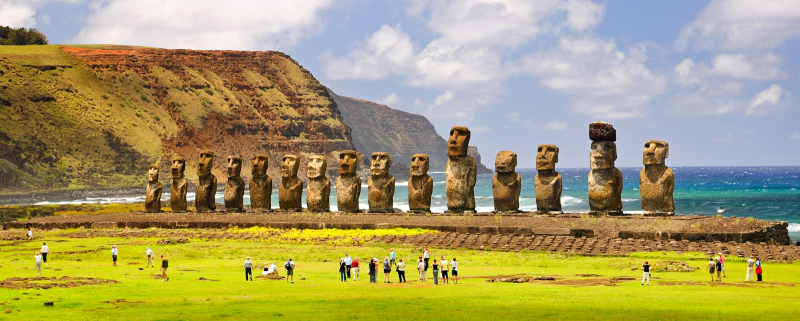
Photo: enchantingtravels 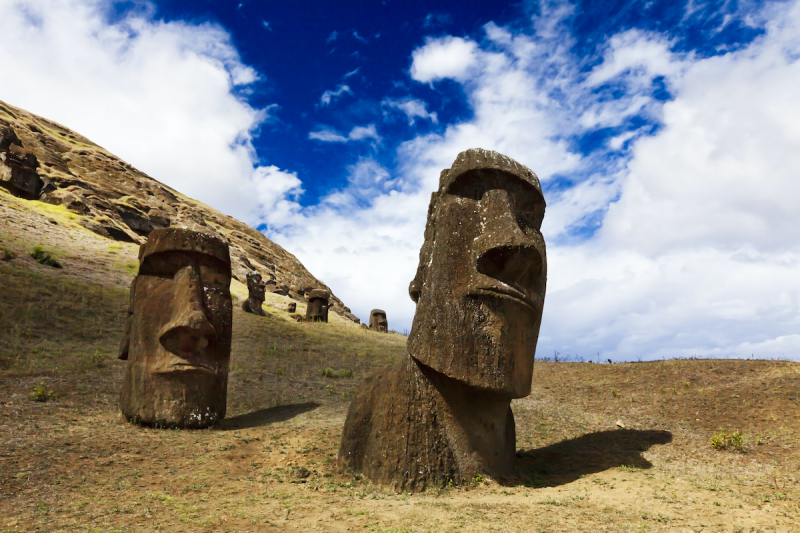
Photo: outoftownblog -
Petra, also known as Raqmu or Raqm by its locals, is a historic and archaeological city in southern Jordan. It is located next to the Jabal Al-Madbah mountain, in a basin surrounded by mountains that constitute the eastern flank of the Arabah valley, which runs from the Dead Sea to the Gulf of Aqaba. The Nabataeans were nomadic Arabs who established Petra as a key regional economic hub because of its closeness to the incense trade routes.
The Nabataeans made a lot of money from trading, and Petra became the center of their prosperity. Unlike their attackers, the Nabataeans were used to living in desolate deserts and were able to repel attacks by taking use of the area's rugged environment. Rainwater harvesting, agriculture, and stone sculpting were among their specialties. Petra reached its height in the first century AD, when the magnificent Al-Khazneh edifice – thought to be the mausoleum of Nabataean king Aretas IV – was built, and its population reached 20,000 people.
Petra is known as the "Rose Red City" because of the hue of the stone from which it is carved. It is known for its rock-cut architecture and water conduit system. Since 1985, it has been a UNESCO World Heritage Site. Petra is "one of the most significant cultural resources of man's cultural heritage," according to UNESCO. Petra is both a symbol of Jordan and the country's most popular tourist attraction. In 2019, the number of tourists reached 1.1 million for the first time, surpassing the 1 million milestones for the first time. Tourism in the city was crippled by the COVID-19 pandemic, but soon after started to pick up again, reaching 260,000 visitors in 2021.
Location: Ma'an Governorate, Jordan
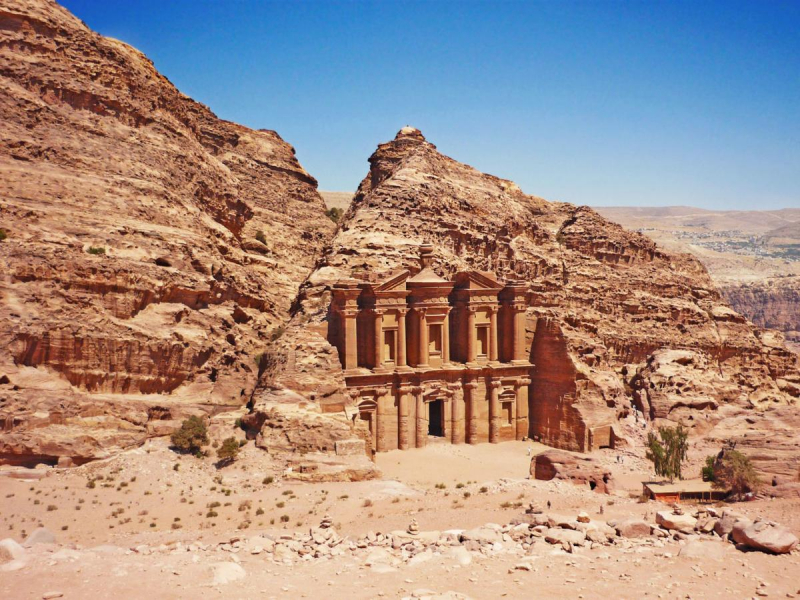
Photo: kyluc 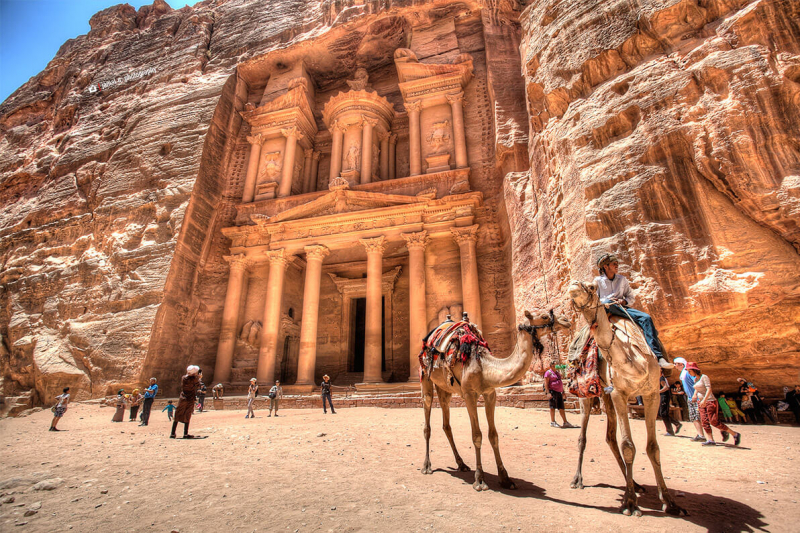
Photo: dammedulich -
Machu Picchu is a 15th-century Inca citadel on a 2,430-meter mountain crest in southern Peru's Eastern Cordillera. It is 80 kilometers northwest of Cusco, in the Machupicchu District of the Urubamba Province, above the Sacred Valley. The Urubamba River runs through it, slicing through the Cordillera and forming a tropical mountain canyon.
According to most modern archaeologists, Machu Picchu was built as a private estate for Inca Emperor Pachacuti (1438–1472). It is known as the "Lost City of the Incas" and is the most well-known symbol of Inca culture. According to historical research published in 2022, the Inca named the place Huayna Picchu because it is located on the lesser peak of the same name.
Machu Picchu was constructed in the Inca tradition, with polished dry-stone walls. The Intihuatana, the Temple of the Sun, and the Room of the Three Windows are the three main constructions. The majority of the outlying structures have been restored to give visitors a clearer understanding of how they once looked. By 1976, 30% of Machu Picchu had been rebuilt, and the work is still ongoing.
In 1981, Machu Picchu was designated as a Peruvian Historic Sanctuary, and in 1983, it was designated as a UNESCO World Heritage Site. In a worldwide internet poll in 2007, Machu Picchu was named one of the New Seven Wonders of the World. Today, the number of tourists visiting Machu Pichu is very large, and it is considered as one of the most beautiful world heritage sites.Location: Cusco Region, Peru
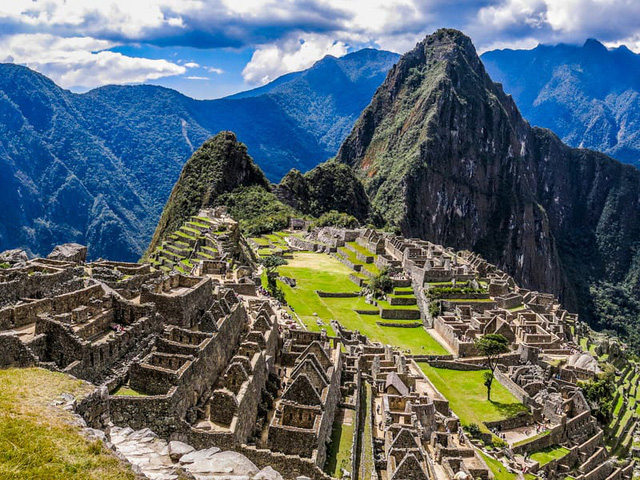
Photo: vietnamtourism 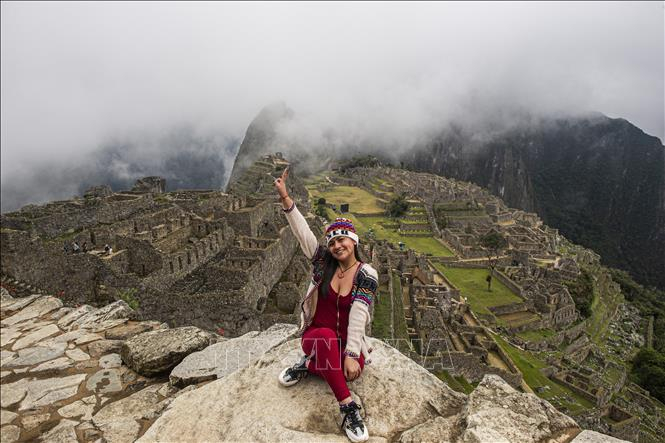
Photo: vnanet -
Old Havana is the city core of Havana, Cuba, and one of the 15 municipalities (or boroughs) that make up the city. It boasts the city's second-highest population density and encompasses the heart of Havana's old metropolis. The present bounds of Old Havana are defined by the old Havana city walls.
There are numerous picturesque structures, fortresses, cathedrals, and palaces to be found there. It is home to a diverse array of original architectural treasures from many centuries, making it one of America's most comprehensive collections of urban structures. More over a thousand ancient buildings may be found in this region of the city, with examples of notable architecture ranging from Baroque to Art Deco.
Because of its remarkable Baroque and neoclassical architecture, defenses, and historical significance as a stop on the voyage to the New World, Old Havana was included on the UNESCO World Heritage List in 1982. A year later, a preservation drive was initiated to restore the buildings' original character.
Location: La Habana, Cuba
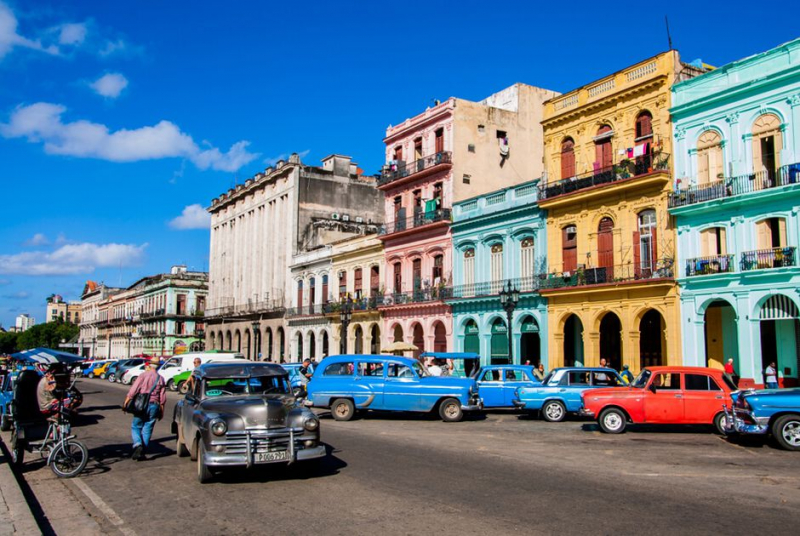
Photo: yeudulich 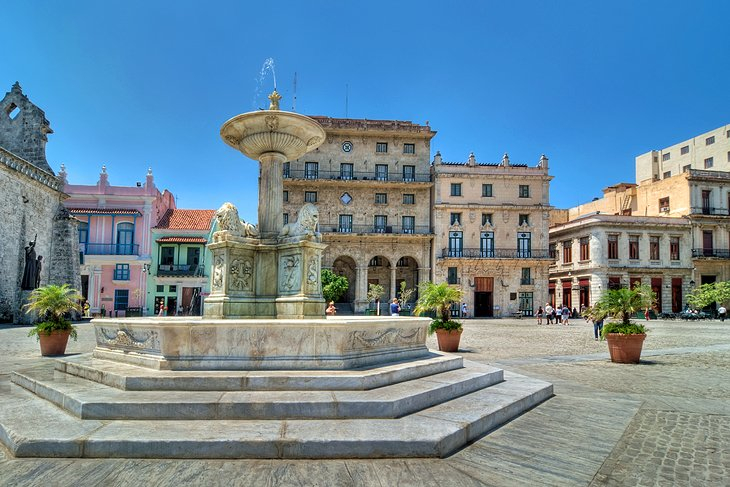
Photo: planetware -
The Great Pyramid of Giza is Egypt's largest pyramid and the tomb of pharaoh Khufu of the Fourth Dynasty. It is the oldest of the Seven Wonders of the Ancient World, having been constructed over a period of roughly 27 years in the 26th century BC. It is also the only one that has remained fully intact. It borders present-day Giza in Greater Cairo, Egypt, as part of the Giza pyramid complex.
For more than 3,800 years, the Great Pyramid was the world's highest man-made edifice, standing at 146.6 meters (481 feet). The smooth white limestone casing was gradually removed, lowering the pyramid's height to the current 138.5 meters (454.4 ft). The basic core structure is what can be observed now. The base was estimated to be 230.3 meters (755.6 feet) square, with a volume of 2.6 million cubic meters (92 million cubic feet) including an internal hillock.
The Great Pyramid was constructed by quarrying 2.3 million massive pieces, weighing a total of 6 million tonnes. The majority of the stones are irregular in shape and just lightly treated. Mortar was used to join the layers on the outside. Local limestone from the Giza Plateau was primarily utilized. Other pieces were transported down the Nile by boat, including white limestone from Tura for the casing and granite slabs weighing up to 80 tonnes for the King's Chamber structure.The burial complex around the pyramid included graves for Khufu's immediate family and court, including three smaller pyramids for Khufu's wives, an even smaller "satellite pyramid," and five buried solar barges joined by a causeway (one near the pyramid and one near the Nile).
Location: Giza, Cairo, Egypt,
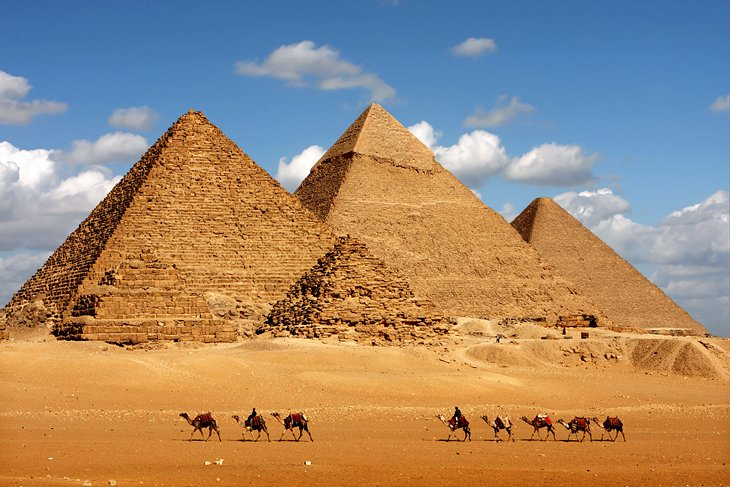
Photo: sagittariustravel 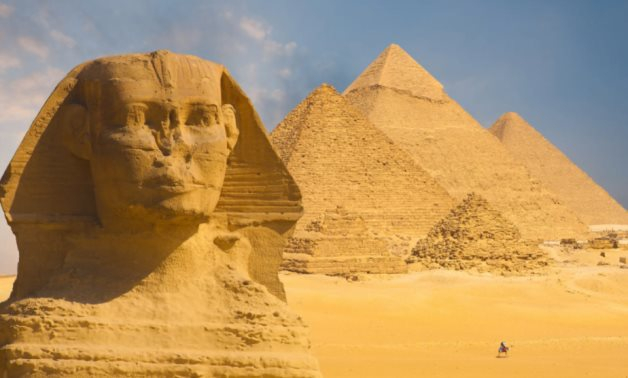
Photo: egypttoday -
The Old City is a 0.9-square-kilometer fortified section of East Jerusalem that is considered by the international community to be occupied by Israel.
Over the previous 1,500 years, the history of the Antique City has been documented in minute detail, most notably in old maps of Jerusalem. Until the late 19th century, this region included the whole city of Jerusalem; adjacent Arab towns like Silwan and new Jewish districts like Mishkenot Sha'ananim eventually became part of the municipal borders.
The Old City is home to various holy sites for the three Abrahamic religions: the Temple Mount and Western Wall for Judaism, the Church of the Holy Sepulchre for Christianity, the Western Wall for Islam, and the Dome of the Rock and al-Aqsa Mosque for Islam.Although the current designations were first introduced in the 19th century, the Old City has traditionally been split into four uneven sections. It is now generally split into the Muslim Quarter, the Christian Quarter, the Armenian Quarter, and the Jewish Quarter (moving counter-clockwise from the northeast). The Ottoman Empire built the Old City's enormous defense walls and city gates between 1535 and 1542 under Suleiman the Magnificent, the 10th Ottoman ruler.
Location: Jerusalem, Israel
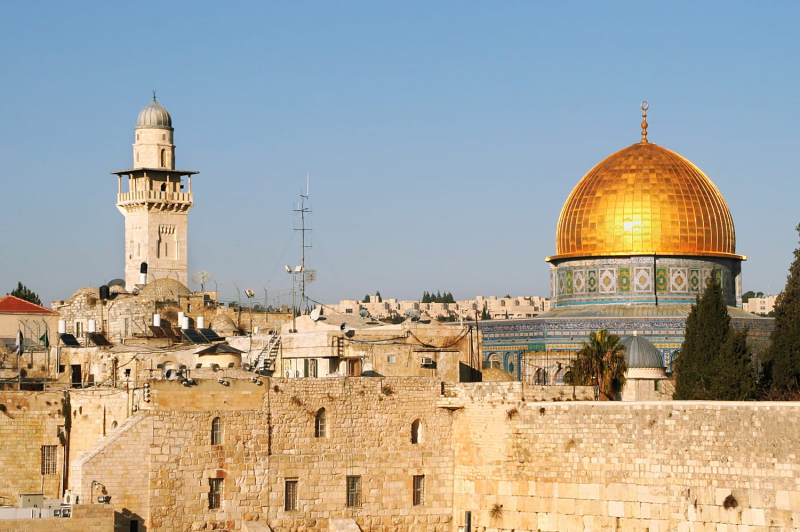
Photo: roadaffair 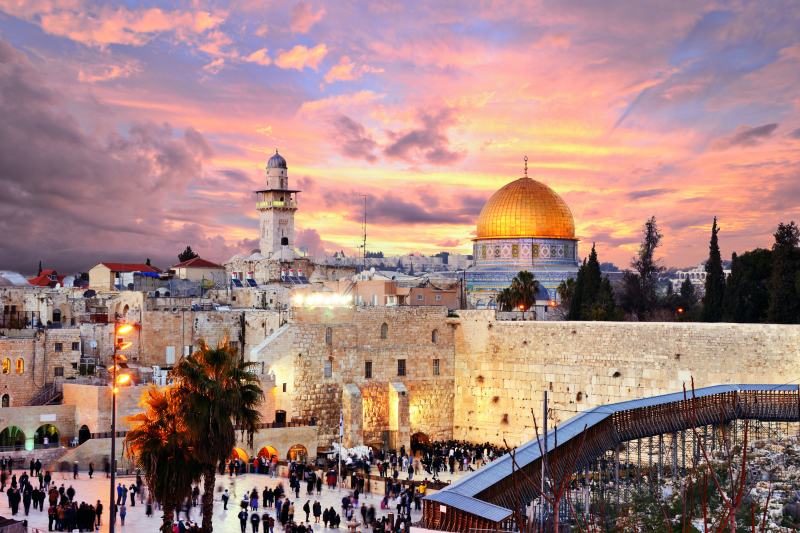
Photo: timeout -
The Great Wall of China is a system of fortifications designed to protect ancient Chinese kingdoms and Imperial China from numerous nomadic populations from the Eurasian Steppe. Several walls were constructed as early as the 7th century BC, with Qin Shi Huang (220–206 BC), China's first emperor, later connecting selected parts. Only a little portion of the Qin wall has survived. Many consecutive dynasties would later construct and maintain multiple lengths of border walls. The Ming dynasty (1368–1644) built the most well-known parts of the wall.
Aside from defense, the Great Wall has served additional objectives such as border controls, allowing for the application of tariffs on products transported over the Silk Road, trade regulation or encouragement, and immigration and emigration control. The construction of watchtowers, troop barracks, garrison stations, signaling capabilities through smoke or fire, and the fact that the Great Wall's course also acted as a transportation corridor all contributed to the Great Wall's defensive qualities.
Distinct dynasties built different courses of boundary walls. They stretch in total 21,196.18 km (13,170.70 mi) from Liaodong in the east to Lop Lake in the west, from the present-day Sino–Russian border in the north to Tao River (Taohe) in the south, along an arc that roughly delineates the margin of the Mongolian steppe. The Great Wall's protective structure is now widely regarded as one of history's most spectacular architectural marvels.
Location: Starting from Shanhaiguan, Bohai Sea coast to Lop Nur, Xinjiang
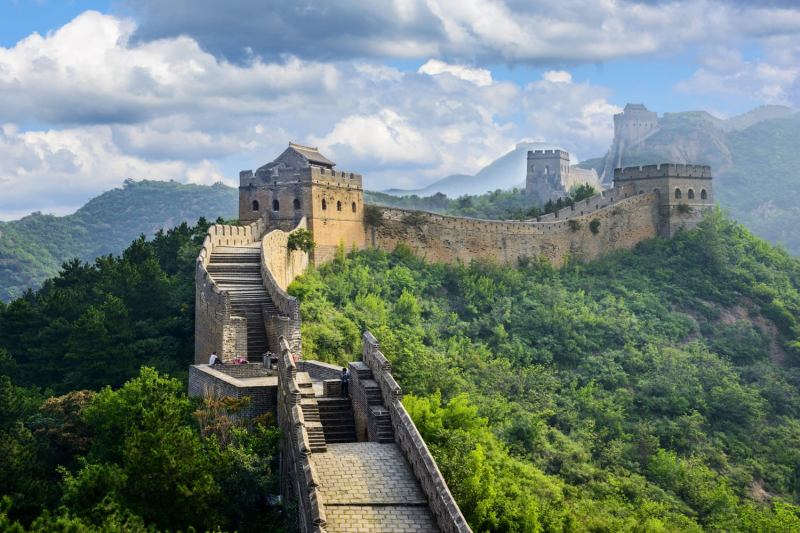
Photo: roadaffair 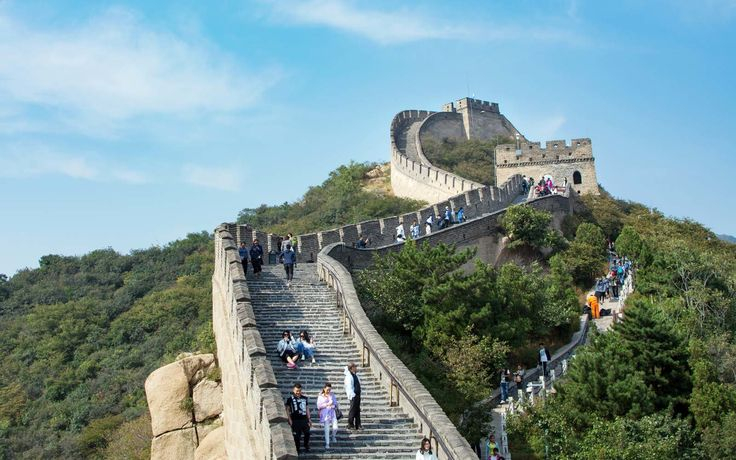
Photo: pinterest -
Itsukushima Temple is a Shinto shrine on Itsukushima Island, most noted for its "floating" torii gate. It is located in the Japanese city of Hatsukaichi, in the Hiroshima Prefecture. The shrine complex is a UNESCO World Heritage Site, and various buildings and belongings have been declared as National Treasures by the Japanese government.
The Itsukushima temple is a renowned tourist destination in Japan. The shrine's spectacular gate, or torii, on the boundaries of the shrine, the sacred peaks of Mount Misen, huge woodlands, and its ocean outlook are its most well-known features. The Honsha temple and the Sessha Marodo-jinja are the two primary buildings in the shrine complex, although there are 17 other buildings and features that contribute to differentiate it.Throughout history, Japan has gone to tremendous lengths to maintain the Shrine's twelfth-century architecture. The shrine was conceived and erected in the Shinden-zukuri style, with pier-like buildings spanning the Matsushima harbor to give the impression that it was floating on the water, apart from the island, and that the faithful may approach it "like a castle on the sea." This concept of fusing architecture and nature was popular in the 16th century and throughout the Heian period, when Japanese structures tended to "follow after their environment," allowing trees, water, and other kinds of natural beauty to be included into the design of homes and buildings. As a result, the two developed a significantly more intimate friendship.
Location: Itsukushima, Japan
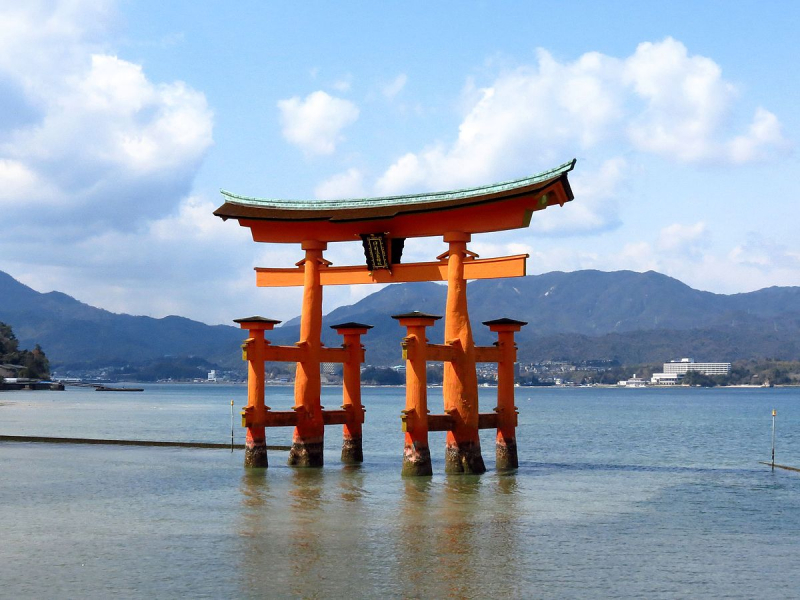
Photo: wikipedia 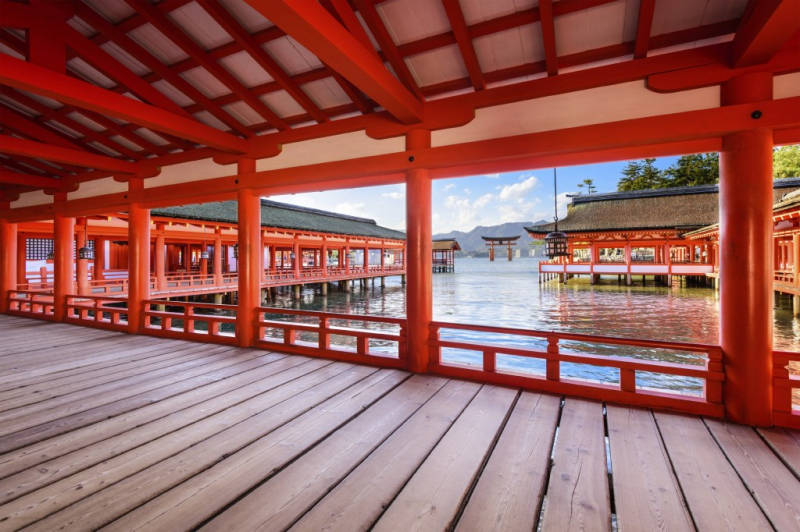
Photo: travel.gaijinpot -
The Acropolis of Athens is an ancient fortress perched atop a rocky outcrop above the city of Athens. It has the ruins of several important architectural and historical structures, the most famous of which is the Parthenon. There are several other acropoleis in Greece, and the term acropolis is generic. The Acropolis of Athens was also known as Cecropia in ancient times, after the mythological serpent-man Cecrops, the purported first Athenian ruler.
The Acropolis of Athens and its monuments are universal icons of the ancient spirit and culture, and they comprise the world's biggest architectural and artistic complex. Following its triumph over the Persians and the foundation of democracy in the second part of the fifth century BC, Athens rose to prominence among the ancient world's city-states. In the centuries that followed, as philosophy and art blossomed, an amazing collection of artists put Athenian leader Pericles' grandiose intentions into action, transforming the rocky hill into a unique monument of thought and the arts under the creative supervision of the sculptor Pheidias. The Parthenon, built by Ictinus, the Erechtheon, the Propylaea, the colossal entrance to the Acropolis, planned by Mnesicles, and the tiny temple Athena Nike were all built during this time.
Location: Athens, Attica, Greece
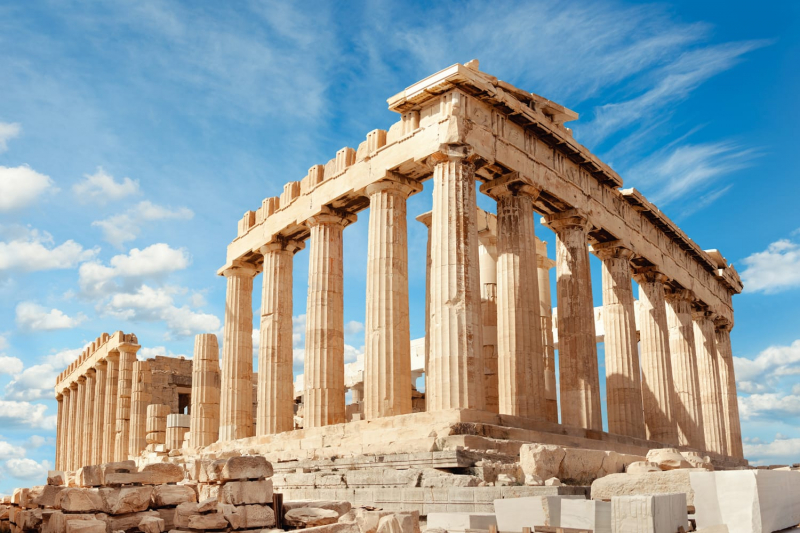
Photo: roadaffair 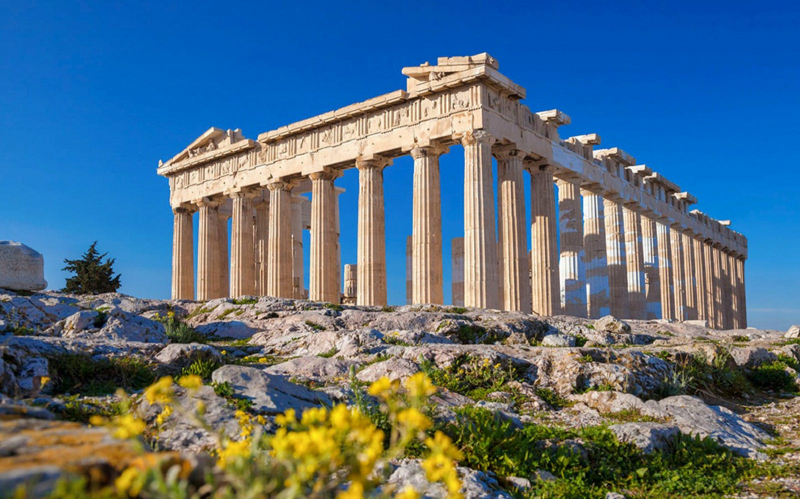
Photo: headout














